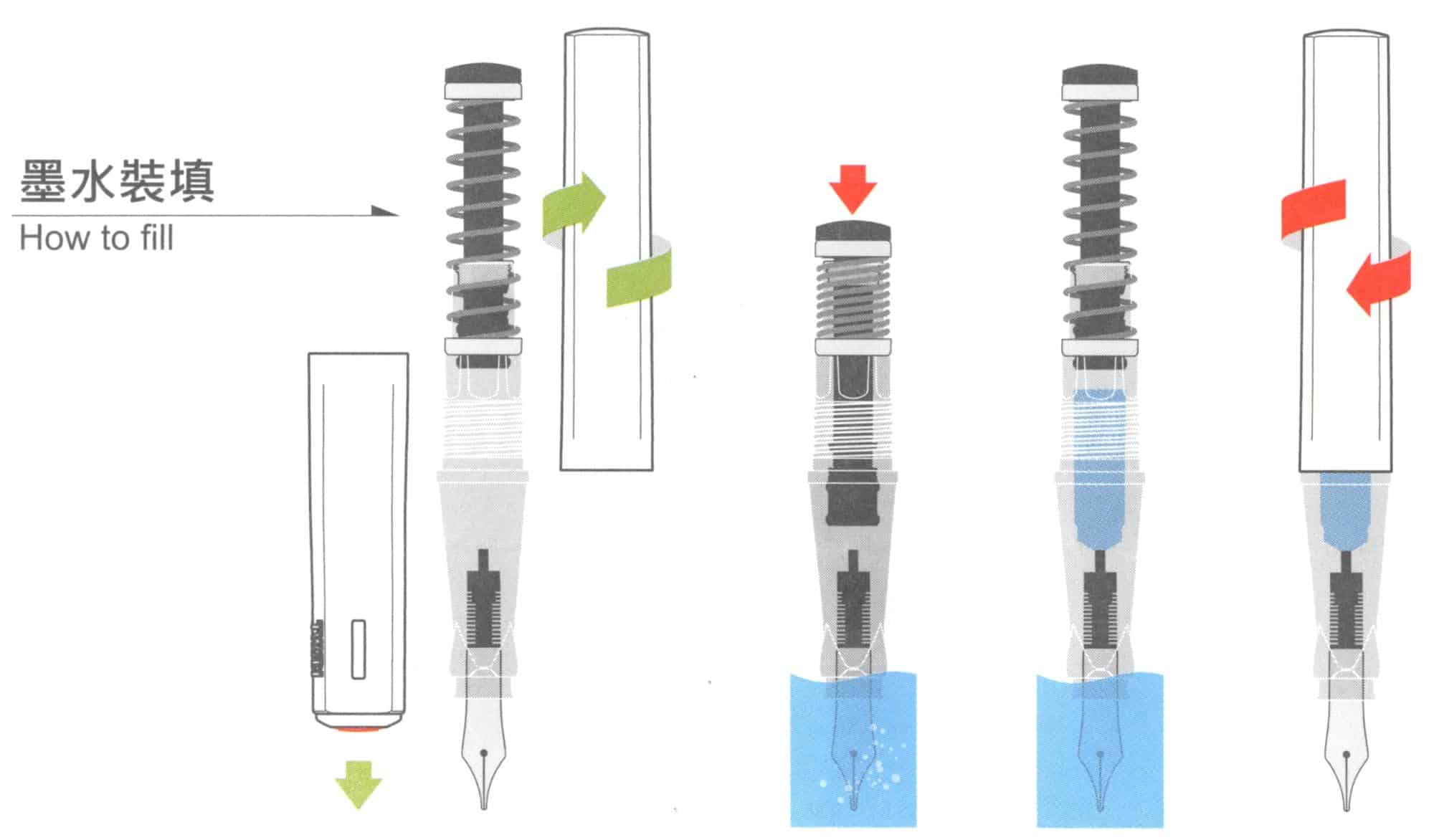Fountain pens can be filled with a number of different mechanisms. These not only fill the pen, but go a long way in placing it within the pen world and then determining its size, price, and other qualities. While no filling mechanism is the best, there are reasons to by one or another each time you get a new pen.
Cartridge/Converter
A cartridge/converter is the most common fountain pen filling type by a long shot. Historically this might not have been the case, but it certainly is in 2020. This method means that the pen can use pre-filled plastic ink cartridges, but it can also use a fountain pen converter. A converter is a device that puts a filling mechanism in the place where a cartridge would otherwise go, something like the Pilot Con-70.
Pros
- Versatile — use cartridges or your own ink
- This design is affordable thanks to its simplicity within the pen body
Cons
- Proprietary cartridges (used by Cross, Pilot, Platinum, Sailor, and some others) limit versatility
- Cartridges create waste
- Converters tend to have worse build quality than a built-in tool
Example Cartridge-Converter Fountain Pens: Lamy Safari, Muji Aluminum Body, Sailor 1911
Piston
A piston filler is the most common type of filling mechanism in high-end pens (the low-end and even the mid-range is dominated by cartridge-converters).
A piston filler is basically a converter. It looks like a piston and works in the a similar way: it is a sealed head within a cylinder. The head is pushed down to expel air and then the piston is pulled up to suck in air. This isn’t a perfect tool as there is almost always an air gap between the piston head and the ink fill line, but there are methods for reducing this.
Pros
- Easy to use
- Relatively inexpensive to put in a pen
- Easy to clean
- Simple to repair
Cons
- Low fill volume relative to other methods
- Gaskets can wear out and need to be replaced
Example Piston-filling Fountain Pens: Twsbi Eco, Sailor 1911 Realo, Lamy 2000
Vacuum
A vacuum or “vac” filler is not a particularly popular mechanism, but it’s one of the coolest and most sought after tools in fountain pens. This works but pushing down a plunger which creates negative pressure (that is, suction) behind it. The plunger then hits a wider spot on the interior cylinder which relieves the pressure, sucking in any air or liquid in the area.
Vacuum filling requires a well-built pen with excellent tolerances, so classically vacuum fillers have only been more expensive pens. With the release of a number of very good, very affordable Chinese fountain pens in 2018-2019, vac fillers are more accessible than ever before.
Pros
- High ink volume
- Fun to use
- Simple interior with limited moving parts
Cons
- Expensive
- Steel interior rod adds a lot of weight
- Needs a sealed gasket to prevent leaks when flying
Example Vacuum-filling Fountain Pens: Pilot Custom 823, Twsbi Vac700R, Wing Sung 699
Rubber Sac
There are many fountain pens that fill simply by having a rubber sac inside that is compressed to push out ink/air and then let go to pull in ink. This is a simple, cheap, but not very elegant solution. Rubber sacs were more popular in the past, when plastic manufacturing technology was not what it is today and any small parts had to be made of metal.
Rubber Sac Fountain Pen Example: Parker 51 Aerometric, Pilot Metropolitan
Pros
- Very cheap to produce
- Easy to maintain and overhaul
Cons
- Rubber sacs crack over time
- Prone to leaking if the sac or adhesive holding it gets old
- Cleaning in hot water can damage adhesive and ruin the seal
- Sacs aren’t clear so you can’t see fill levels
Lever
A lever filler is a type of rubber sac filling fountain pen that uses a level to compress and then expand the sac. The level is normally on the outside of the body and can be easily seen when viewing the pen.
Pros
- Simple
- Cheap to build and maintain
Cons
- People who don’t know about fountain pens often pull the lever, not expecting ink to come out
- The levers can be delicate
- All the problems of a rubber sac
Other Filler Types
These are other, less popular filler types. We’ll expand into them in the coming days!
- Crescent
- Mystery Filler
- Eyedropper
- Touchdown
- Snorkel
- Bulkfiller
- A combination of a piston and vacuum filler.
- Bulb Filler
- Pump Filler
